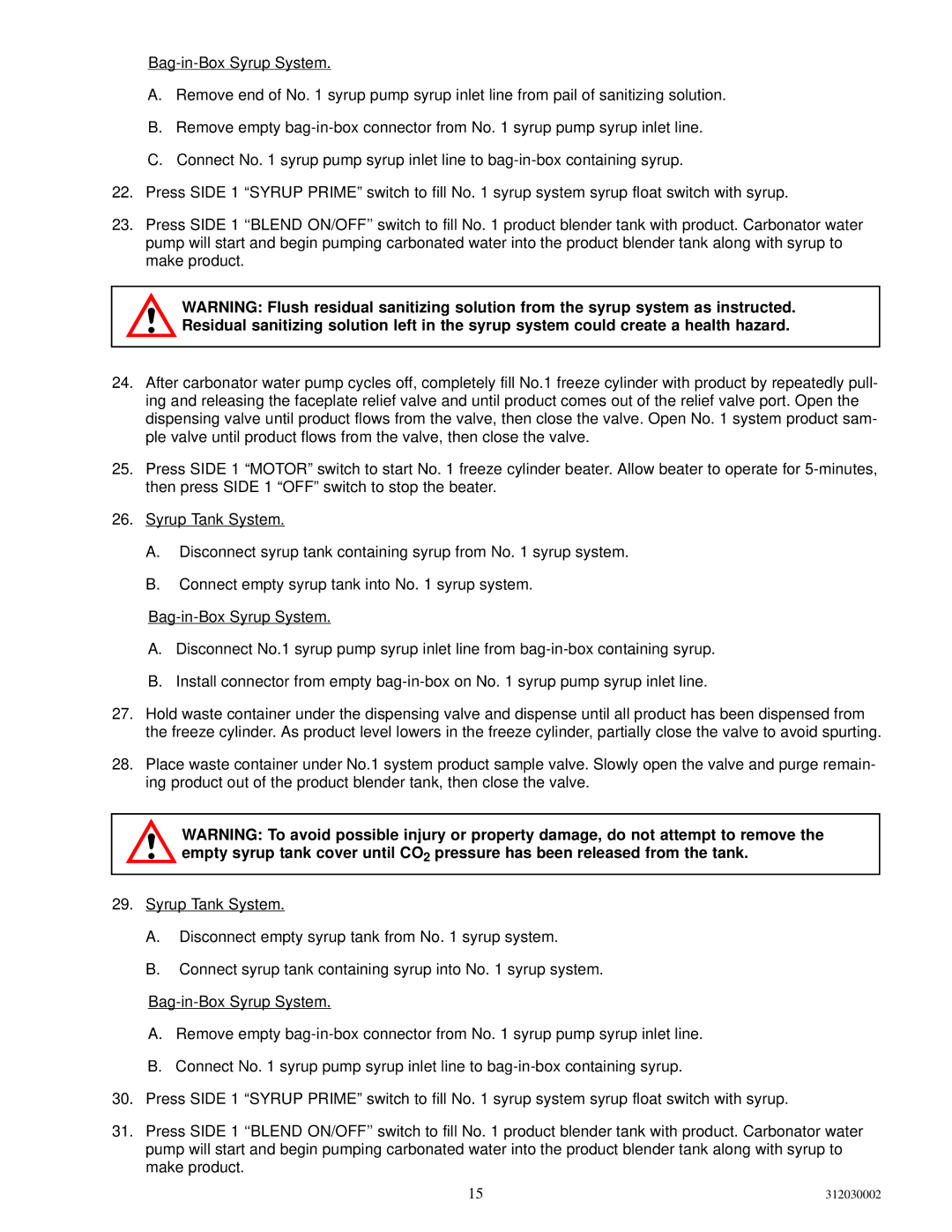R-404A specifications
Cornelius R-404A is a synthetic refrigerant blend widely used in various refrigeration and air conditioning applications. Composed primarily of three components—R-125 (44%), R-143a (52%), and R-134a (4%)—this blend is designed to provide effective cooling performance in both commercial and industrial environments. Its popularity can be attributed to its efficient thermodynamic properties, making it a suitable choice for low and medium temperature refrigeration systems.One of the hallmark features of R-404A is its high energy efficiency. As a refrigerant, it offers excellent performance in heat transfer capabilities, which translates to lower energy consumption and operational costs. R-404A operates effectively within a wide range of evaporating temperatures, allowing it to serve various applications, from refrigerated display cases to cold storage facilities. The refrigerant's low glide temperature helps maintain consistent temperatures in these applications, enhancing food safety and product quality.
R-404A does not belong to the ozone-depleting substances category, making it an environmentally friendly choice. However, it is important to note that R-404A does have a significant global warming potential (GWP) of 3,922, raising concerns regarding its long-term environmental impact. As awareness of climate change increases, industries are shifting towards alternative refrigerants with lower GWPs, but R-404A remains prevalent in many existing systems.
In terms of compatibility, R-404A is non-toxic and non-flammable, making it a safe choice for use in commercial environments. Additionally, it is compatible with oils traditionally used in refrigeration systems, simplifying retrofitting processes when upgrading from other refrigerants. R-404A is also designed to work with standard refrigeration components, ensuring compatibility with existing equipment.
To maximize efficiency and performance when using R-404A, proper system design and maintenance are critical. Regular checks for leaks, appropriate charge levels, and routine maintenance can help extend the life of the system while ensuring optimal performance of R-404A as a refrigerant. As industries continue to adapt to evolving regulations and environmental concerns, the future of R-404A will likely involve the transition to lower-GWP refrigerants, but its robust features and performance continue to make it a staple in the refrigeration landscape.

